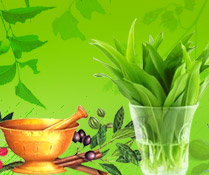Vrishya Chikitsa Treatment
Vrishya Chikitsa or vajeekarana chikitsa, one of Ayurveda Ashtang,
refers to Ayurvedic aphrodisiac therapy. It has the as a rule respected
side in Ayurvedic treatment. Vrishya chikitsa is the best way of growth
of sukra dhathu, or the reproductive tissues of the body. Ayurveda as an
old medical science considers mentally and physically strong offspring
as the trap pebbles of a good physical shape opportunity society. So,
the standard aim of Ayurvedic treatment Vrishya Chikitsa is expected at
the birth of healthy children.
Benefits from Vrishya Chikitsa
Vrishrya Chikitsa as ayurvedic treatment is essential for good health. It helps in increasing the will power, intellect and memory, in addition to a healthy body. It strengthens body tissues (dhatus) like muscles, fats, bones and blood. Ayurvedic Treatment Vrishya Chikitsa helps in improving the men’s infertility as well as women’s infertility and in improving the sexuality of an individual.
Procedure Involved in Vrishya Chikitsa
The procedures involved in Vrishya Chikitsa are Kayaseka, Dhara, Navarakkizhi treatments and utilization of certain aphrodisiac medicines. The herbs and treatments are intended at improving the condition for men and women. In Vrishya Chikitsa treatment, the individual follows an Ayurvedic direction rigorously, by taking in herbs or herbal combinations which have aphrodisiac properties. Some of the Ayurvedic aphrodisiacs which provide extra sexual power to couples and enable them to give birth to healthy children are Shilajit, Mucuna Pruriens (naikkurana), Aswagandha, and many more.
Benefits from Vrishya Chikitsa
Vrishrya Chikitsa as ayurvedic treatment is essential for good health. It helps in increasing the will power, intellect and memory, in addition to a healthy body. It strengthens body tissues (dhatus) like muscles, fats, bones and blood. Ayurvedic Treatment Vrishya Chikitsa helps in improving the men’s infertility as well as women’s infertility and in improving the sexuality of an individual.
Procedure Involved in Vrishya Chikitsa
The procedures involved in Vrishya Chikitsa are Kayaseka, Dhara, Navarakkizhi treatments and utilization of certain aphrodisiac medicines. The herbs and treatments are intended at improving the condition for men and women. In Vrishya Chikitsa treatment, the individual follows an Ayurvedic direction rigorously, by taking in herbs or herbal combinations which have aphrodisiac properties. Some of the Ayurvedic aphrodisiacs which provide extra sexual power to couples and enable them to give birth to healthy children are Shilajit, Mucuna Pruriens (naikkurana), Aswagandha, and many more.


 ayurveda : Ayurveda, a Sanskrit word comprises of two words,
ayus, meaning 'life' and veda, meaning 'science', thus ayurveda in
literal sense means the 'science of life'. It is a system of traditional
medicine with its origin in the Indian subcontinent. It has been a
popular and influential system of medicine in entire South Asia. The
earliest literature of this traditional medicine system is said to have
appeared during the Vedic period in India. The most influential of these
Ayurveda literatures has been the Sushruta Samhita and the Charaka
Samhita. Ayurveda is said to be a fully developed medicinal art with a
number of unique and exclusive medicinal therapies and surgical
procedures for the treatment of various ailments and diseases.
ayurveda : Ayurveda, a Sanskrit word comprises of two words,
ayus, meaning 'life' and veda, meaning 'science', thus ayurveda in
literal sense means the 'science of life'. It is a system of traditional
medicine with its origin in the Indian subcontinent. It has been a
popular and influential system of medicine in entire South Asia. The
earliest literature of this traditional medicine system is said to have
appeared during the Vedic period in India. The most influential of these
Ayurveda literatures has been the Sushruta Samhita and the Charaka
Samhita. Ayurveda is said to be a fully developed medicinal art with a
number of unique and exclusive medicinal therapies and surgical
procedures for the treatment of various ailments and diseases.






